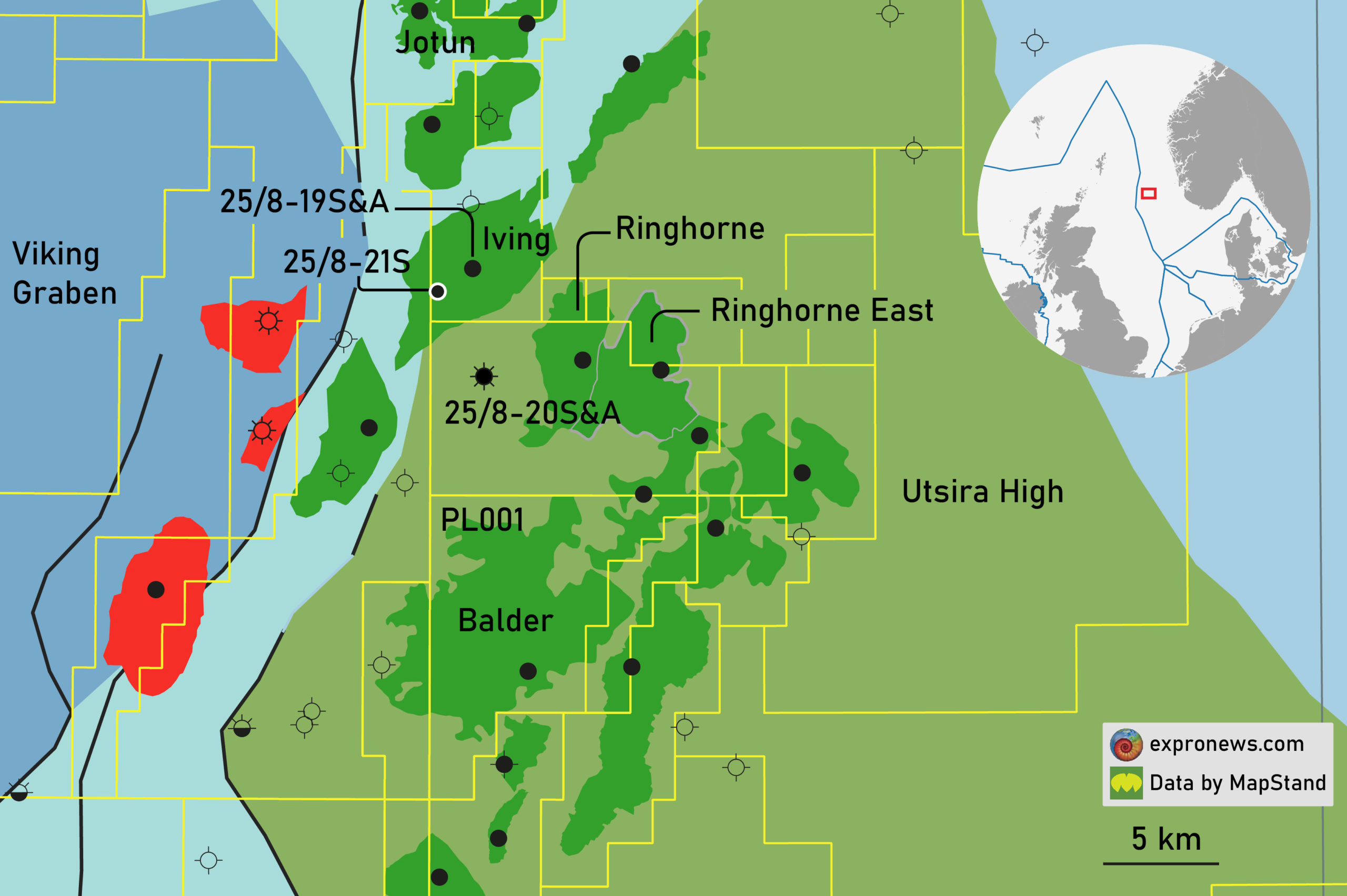With the discovery of between 60 and 135 MMboe recoverable, Vår Energi and partner Mime Petroleum (10%) have clearly proven that the area where the second wildcat on the entire Norwegian Continental Shelf was drilled (25/11-1, 1967) still holds potential up to today. Is it a surprise to see this unfolding?
In a way, it is not. Even though licence 001 proved oil-bearing in 1967, it took until 1999 before the Balder field started production. This was probably caused by the complex geology of what is now interpreted as a system of injected Paleocene sands into the Eocene overburden, causing a lack of reservoir predictiveness especially in times of poor seismic imaging capabilities.
Even though Exxon eventually declared Balder as a giant field, during the ten years before the sale of Balder to Vår Energi in 2019, no further near-field exploration drilling took place. Therefore, it is no surprise to that this lack of activity has resulted in a situation where there are still attractive discoveries to be made in an area that featured in one of the first drilling campaigns on the NCS.
As Denis Palermo, VP Exploration at Vår Energi, already showed during the NCS Exploration Strategy Conference 2019, his company identified many prospects within the Greater Balder area. No doubt that the King/Prince discovery announced yesterday featured on the list, and no doubt that more wells will be drilled in the years to come to add incremental resources to the Balder-Ringhorne development.

King Prince
The 25/8-20S and B&C side tracks of the well that has now been completed tested a variety of different reservoirs, ranging from injected Balder sands to the Triassic (see schematic diagram kindly supplied by Vår Energi above).
Both the S and B wells proved oil in the Triassic Skagerrak Fm (Prince prospect). Although the oil water contact was not found, pressure data suggest there is communication between the two wells across the fault as shown in the diagram.
25/8-20B and C both encountered oil with a significant gas cap in Eocene injectites of the King prospect, displaying excellent reservoir properties. Both the OWC and the GWC were found at the same depth in the two wells.
Based on these drilling results, the partnership concluded the discovery to be commercial and a tie-back to existing infrastructure at Balder will be considered.
Not the only well
Whilst the results of 25/8-20 are now being further evaluated, Mol and partners are drilling the first (25/8-21A) of two appraisal wells on the Iving discovery in an attempt to further proof potential in the Triassic as well as basement. The 25/8-19 discovery well also targeted Eocene injectites but these were found to be thin and water wet.
All in all, the area around PL001 is back in business and we will no doubt report on this exciting part of the basin again very soon.
HENK KOMBRINK





